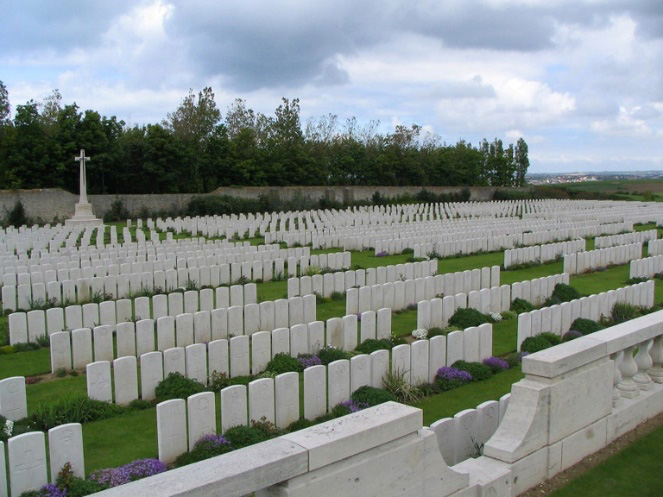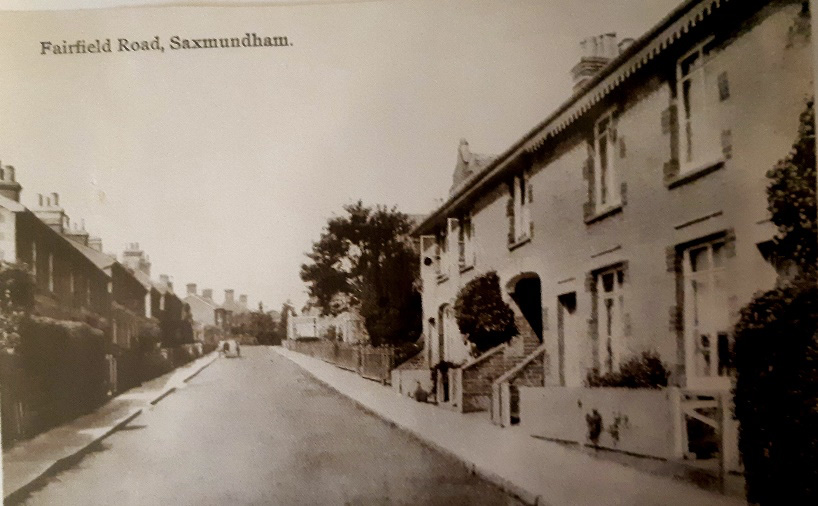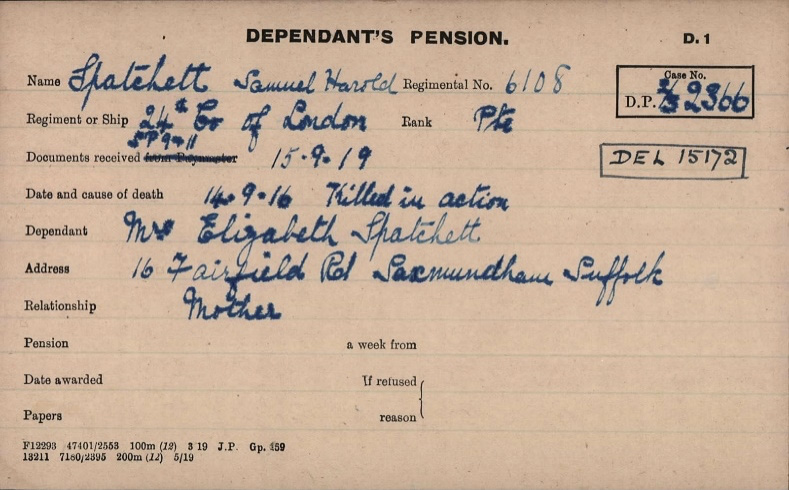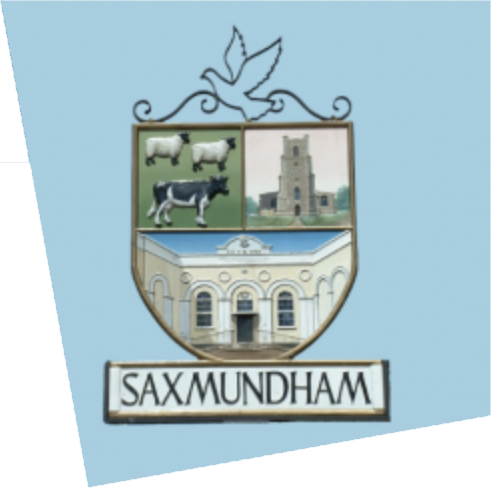Fairfield Road, stop 27 (a).
Private G/95345 Arthur Alfred Salter, 2nd/2nd Battalion London Regiment, (formerly 4691 Cambridgeshire Regiment and 36617 Royal Berkshire Regiment), 1890 – 11 August 1918
Arthur Alfred Salter, son of Frederick and Fanny served in three different regiments during the First World War and his parents’ personal epitaph to him likely speaks of his character; ‘Greater love, Have no man than this, That he lay Down, His life for his friends’. Even in death Arthur helped his family when his parents assigned his pension of five shillings per week to Edith, his poorly sister.
Arthur Alfred Salter, the eldest of three surviving children of house painter, Frederick and Fanny Salter was born and lived until enlistment at 1 Fairfield Road. A grocery assistant in 1911, he enlisted firstly in the Cambridgeshire Regiment before transferring to the Royal Berkshire Regiment and finally the Second London Regiment. Arthur died of wounds on 11 August 1918 and is buried in the Terlincthum British Cemetery, Wimille, France.
This cemetery was opened in June 1918 when the space available for service burials in the civil cemeteries of Boulogne and Wimereux was exhausted. It was used chiefly for burials from the base hospitals. His parents arranged for their own personal message on the gravestone that reads:
‘GREATER LOVE, HAVE NO MAN THAN THIS, THAT HE LAY DOWN, HIS LIFE FOR HIS FRIENDS’

Terlincthum Cemetery, Courtesy of the Commonwealth War Graves Commission
Arthur’s youngest brother, Frederick William born 1895, enlisted in April 1916. Likely his trade sheltered him from front line fighting. Frederick, a vehicle mechanic was assigned to the Mechanical Transport Branch of Army Service Corp and served as a lorry driver until demobilisation in October 1919. During his service he received a good conduct medal and gained the rank of corporal. On return home he continued working with vehicles as a motor mechanic for Smith and Wesby. Whilst thankful that one son survived, his parents faced further challenges.

Photo courtesy of Saxmundham Museum
By 1921, Frederick and Fanny’s daughter, Edith born 1892, was recorded as an ‘invalid’. Frederick and Fanny now in their early sixties seemingly wishing to ensure that their daughter was financially cared for assigned Arthur’s pension of five shillings per week to Edith. By 1939 Edith resided in the Red House, Bulcamp. Formerly the workhouse, the draconian regime had changed to provide care for the ‘infirm’ and ‘incapacitated’. Arthur’s legacy helped his sister throughout her troubled life.
Arthur is commemorated on Saxmundham’s Chapel, Church, and Fromus Square memorials and on the Oddfellows memorial plaque.
Fairfield Road, stop 27 (b).
Private 6108, Samuel Harold Spatchett, 1st/24th Battalion, London Regiment (formerly 23811, 3rd Battalion Suffolk Regiment), 1896 – 14 September 1916
It is very likely that Samuel enlisted at the same time as John Richard Good. Both joined the 3rd Battalion of the Suffolk Regiment. Both likely received training before transferral to the 1st/ 24th Battalion, London Regiment and thence to France on 16 June 1916. Sadly, Saxmundham young men perished on 14 September 1916. Samuel’s elder brother, William John Spatchett, joined the Kings Shropshire Regiment in 1909 and served in India before the battalion transferred to the western front on 20 December 1914. William’s time in the army was far from smooth and his pre-war charge sheet indicated a resilience to discipline, drinking water whilst on march, smoking, breaking out of camp, disobedience, drunk whilst on escort duty, etc. Whilst these episodes resulted in punishment and removal of his lance corporal rank, he dutifully served in France from 20 December 1914 to 18 November 1915. However, that was the end of overseas service. His time in India affected his health and he was subject to reoccurring bouts of malaria. William thereafter only served at home and was discharged from the army in August 1921.
In 1911 Samuel Harold Spatchett, one of eight children of William and Elizabeth Spatchett, was employed as a butcher’s errand boy and lived at home with his parents and five of his siblings at 16 Fairfield Road. His father William, a gardener and groom continued in this career until at least his seventy-fourth year! The Spatchett family likely counted themselves lucky that fate protected two of their sons, albeit sadly Samuel perished.
It is very likely that Samuel enlisted at the same time as John Richard Good. Both joined the 3rd Battalion of the Suffolk Regiment in Saxmundham. Both likely received training before transferral to the 1st/ 24th Battalion, London Regiment and thence to France on 16 June 1916. Sadly both Saxmundham young men perished on 14 September 1916. Samuel is buried in the Flatiron Copse Cemetery, Mametz, Somme, France and is commemorated on Saxmundham Church, Chapel and Fromus Square Memorials. He is also remembered on the Oddfellows wooden memorial to soldiers that fell during 1914-1918. Through ill health and defective eyesight his brothers survived the Great War.
Elder brother William John Spatchett, a gardener joined the Kings Shropshire Regiment in 1909 and served in India before the battalion transferred to the western front on 20 December 1914. William’s time in the army was far from smooth and his pre-war charge sheet indicated a resilience to discipline, drinking water whilst on march, smoking, breaking out of camp, disobedience, drunk whilst on escort duty, etc. Whilst these episodes resulted in punishment and removal of his lance corporal rank, he dutifully served in France from 20 December 1914 to 18 November 1915 and was awarded the 1914-1915 Star. However, that was the end of overseas service. His time in India affected his health and he was subject to reoccurring bouts of malaria. William thereafter only served at home and was discharged from the army in August 1921.

Fairfield Road, photo courtesy of Saxmundham Museum
Lawford John Spatchett, a baker and Samuel’s younger brother also avoided front line duty. Requiring spectacles and needing regular eye tests he was not fit for front line duty. Albeit he was keen to serve his country and enlisted in Ipswich aged seventeen years and four months on 5 September 1916 and was mobilised on 17 February 1917. Lawford was first assigned to the Army Service Corps as a baker then posted to the 4th Battalion of the Lancashire Fusiliers. Being less than A1 fighting condition saved him as malaria saved his brother.

